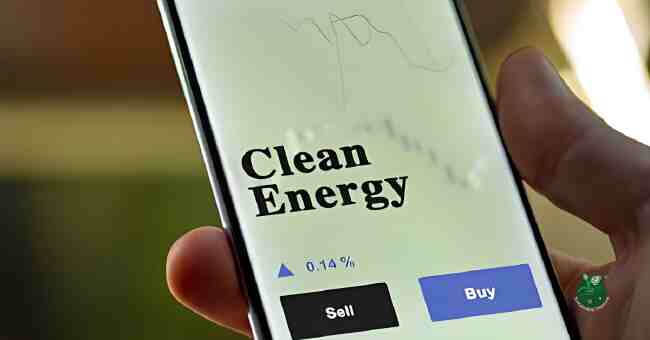Table of Contents
Can AI for Smart Grids really transform aging power grids? Absolutely! After a decade advising utilities on renewable integration, I’ve seen firsthand how complex adding solar, wind and EVs makes grid management.
Keeping supply and demand balanced on systems built for centralized assets becomes nearly impossible without smart automation.
I remember touring a utility control room where operators were manually typing generator setpoints to avoid blackouts during heatwaves.
Sweat poured off foreheads as they questioned if infrastructure could handle rapid decarbonization. In that intense moment, AI’s potential clicked – self-optimizing algorithms could orchestrate the unpredictable dynamics effortlessly.
Investing in machine learning to upgrade reliability and resiliency is crucial. In this article, I’ll share insider knowledge on how AI unlocks a flexible, efficient clean energy grid. The future beckons.
AI for Smart Grids: Why This Matters
With climate change accelerating and renewable energy expanding quickly, our power grids are undergoing massive changes. All the new solar panels, wind turbines, electric vehicles, battery storage projects, and distributed energy resources make keeping the lights on much more complex. Without upgrades, our aging grid infrastructure could buckle under the strain.
This is where AI comes in! Smart algorithms can help manage all the complex dynamics of supply and demand in real-time, optimizing renewable integration on a large scale. AI can make grids self-healing, resilient, and hyper efficient. It’s like installing a high-tech “brain” to coordinate the green energy boom.
Investing in AI-enabled smart grids is critical to speed up decarbonization. It also saves money by reducing congestion, outages, and infrastructure spending. As an added bonus, it unlocks cool tech like smart meters, microgrids, and transactive energy markets.
Let’s dive deeper.
AI Enables Predictive and Adaptive Management of Decentralized Supply and Demand
Balancing gigawatts of solar and wind with millions of EVs, home batteries, smart devices is super tricky with conventional control systems. The variability and complexity get out of hand fast
Luckily, machine learning algorithms thrive on finding patterns in massive, chaotic datasets like this.
Forecasting Renewable Generation to Optimize Scheduling and Dispatch

AI takes historical data from weather stations, turbine sensors, and satellite imagery and learns to predict renewable output. This helps utilities schedule the right amount of backup power ahead of time.
Sophisticated deep learning models can forecast solar generation within 5% accuracy up to 6 hours ahead using sky images. That’s huge for integration.
Similar neural networks are being developed by Google and others to predict wind farm output based on weather patterns. The generators can then be optimally dispatched when needed.
Predicting and Shaping Customer Demand via Intelligent Automation
On the customer side, everything from EVs, smart thermostats, and home batteries are responsive to price signals and can adjust their usage. This “demand flexibility” can be optimized with AI to flatten peaks and fill valleys in consumption.
For example, algorithms can automate EV charging to soak up midday solar surplus and then taper off during the evening net load peak. This “smart charging” can shave expensive peaker plant usage significantly.
AI aggregated control of large numbers of home batteries and hybrid water heaters also flattens the famous “duck curve” net load shape:
| Generation Type | Peak Output |
|---|---|
| Solar PV | Midday |
| Wind Turbines | Evening |
| Net Load Shape | Pronounced peaks and valleys |
By learning customer behavior patterns, AI apps will eventually automate demand response for entire neighborhoods, smoothing consumption to match renewable generation.
This next-gen demand forecasting and management will be crucial as adoption of behind-the-meter assets takes off.
Using Simulations and Digital Twins to Model Complex Dynamics
As if predicting weather, market prices, and human behavior wasn’t hard enough…
Grid operators have to constantly run complex simulations to assess stability and optimize dispatch as the mix of generators rapidly shifts.
Here too, AI shines by building high fidelity digital twin models that perfectly mirror all the physical assets, telemetry data and parameters of the actual grid.
Reinforcement learning algorithms then co-control the digital twin, exploring millions of scenarios much faster than real-time. This reveals vulnerabilities and tests strategies before deploying them, accelerating innovation.
So cool.
Machine Learning Allows High Penetration of Diverse and Distributed Resources
Ok, so AI helps forecast and shape the crazy complex supply and demand on modern grids. But its real magic is coordinating everything seamlessly at scale.
Integrating Solar, Wind, EVs, Storage at Scale
A big challenge today is that regions can only handle about 10-20% renewable penetration before stability suffers. But with advanced analytics, much more is possible.
For example, Google’s DeepMind AI increased wind power usage at their data centers by over 20% through reinforcement learning, optimizing across millions of control combinations.
Similar machine learning can optimize grid-level renewable integration by coordinating batteries, pumped hydro, hydrogen storage and more to balance generation.
This enables scaling past theoretical limits while avoiding curtailment. One study found AI could enable 30-40% solar and wind penetration in certain regions. Exciting stuff.
Coordinating Networked Microgrids and Virtual Power Plants
At the cutting edge, AI is unlocking decentralized energy trading through transactive energy markets and virtual power plants (VPPs).
These blockchain-based platforms connect distributed solar, wind, batteries, EVs and even home appliances into a single coordinated pool using economic signals.
Households become “prosumers” who can customize the automation of assets to maximize self-consumption or sell excess power to neighbors via smart contracts.
VPPs aggregate hundreds of such local resources to offer grid services and compete in wholesale markets as a single fleet. This simultaneously empowers consumers while making small-scale assets dispatchable at scale.
Early demonstration projects show AI optimized VPPs can double returns for solar panel owners by providing frequency regulation services. Win-win.
Soon hyperlocal peer-to-peer energy trading will become mainstream thanks to algorithms that automatebid optimization, risk modeling, portfolio balancing and more.
Advanced Algorithms Boost Reliability, Resiliency and Cybersecurity
A modern grid has to be resilient against storms, fires, cyber-attacks, and other shocks that are growing more intense lately…
Thankfully, AI promises a self-healing infrastructure that fixes problems before we even notice.
Faster Outage and Fault Restoration through Automation
When disasters strike, getting the lights back on ASAP is critical. Unfortunately, utilities must still rely on slow, manual inspections to assess damage and dispatch crews.
But researchers have demonstrated automated damage assessment using drones and computer vision that detect downed lines 10 times faster after wildfires. Coupled with simulation algorithms, this allows rapid re-routing and crew dispatch to accelerate restoration.
Meanwhile, new fault location, isolation & supply restoration (FLISR) systems use reinforcement learning to quickly isolate issues and minimize customers impacted – all automatically.
Reinforcement Learning for Adaptive Protection Schemes
Legacy protection equipment like fuses, breakers and relays are static and triggered by violations of fixed voltage/frequency/current/temperature thresholds.
But with growing variability, these crude schemes now have to use very conservative, restrictive limits – forcing curtailment of otherwise usable power.
Intelligent agents programmed using reinforcement learning adapt protection setpoints dynamically based on real-time conditions and probability of issues arising. This prevents premature tripping and unlocks flexibility.
For example, all-ML adaptive trip settings increased solar hosting capacity 5X on a California feeder without violations. That’s liberating.
Using AI to Detect Anomalies and Strengthen Cyber Defenses
Finally, with grids getting hyperconnected, threats from hackers loom larger every day.
Thankfully, AI is a powerful cyber ally. Algorithms can baseline normal network traffic then flag deviations indicative of intrusions needing investigation.
Unsupervised learning systems digest billions of data points from phasor measurement units, smart meters, log files, and more to profile grid communication patterns.
The AI then builds live vulnerability maps to fortify defenses and sniff out anomalies invisible to legacy software in real-time.
This 24/7 immune-system-for-the-grid uses advanced analytics to keep our critical infrastructure secure. Talk about peace of mind.
Deep Learning Extracts Maximized Value from Massive Grid Data
Modern grid infrastructure has a truly mind-boggling amount of data streaming from millions of sensors, meters, assets in the field.
Without AI to process this firehose of information, most of it gets wasted.
Thankfully, deep learning algorithms thrive on finding useful insights hidden inside massive, messy datasets.
Processing Vast Data from Sensors, Meters, Equipment
High resolution equipment telemetry coupled with new IoT smart sensors across transmission lines, transformers, substations etc. generate terabytes per substation per year!
Just one set of transmission line monitoring sensors can have over 200 data channels sampling 30,000 times per second!
No human can track anomalies or derive meaning from this scale of data. But deep neural networks ingest such flows effortlessly, transforming grid operations.
Identifying Efficiency Gaps and Infrastructure Upgrade Needs
Once ingested, comparative analysis of cross-asset telemetry and usage data reveals crucial insights.
AI baselines key parameters like system losses, power factors, load factors, and flags poor performing assets. Operators also gain visibility into upgrade priorities.
This analytics-based asset management ensures peak performance and delays expensive capital upgrades until truly necessary. Studies suggest advanced algorithms can reduce operations & maintenance costs by over 25% through optimization.
Predictive Maintenance and Asset Health Monitoring
But AI can go way beyond finding current under-performance issues…
The same time-series data used for monitoring combined with computer vision, vibration sensors, and even acoustic tracking is being used to predict failures before they happen.
Deep anomaly detection notes subtle performance degradations over time and estimates the remaining useful life of critical assets based on digital twin simulations. This enables just-in-time maintenance instead of wasteful routine upkeep.
The benefit? One UK distribution utility targeting transformers and switchgear is cutting maintenance expenses 23% while improving reliability over 12%. Not too shabby!
The same approach applied across entire asset fleets will boost efficiency exponentially. It’s a no-brainer investment as far as I’m concerned.
Key Takeaways

I know I covered a ton of ground here and probably threw more jargon than I meant to! The world of AI-enabled grids is complex but super fascinating in my opinion.
Let me try to ground this future tech into few key tangible takeaways:
1) AI translates to rapid decarbonization and extraordinary efficiency
By deeply integrating renewables and distributed assets, smart algorithms accelerate green energy adoption on a sweeping level. This also unlocks demand flexibility for incredible optimization.
2) Investing in AI future-proofs electricity infrastructure
Self-optimizing automation prepares grids for coming disruptions like mass EV adoption, transactive energy markets, extreme weather etc. without requiring physical upgrades.
3) The consumer experience transforms with personalization
Imagine algorithmic assistants that schedule your EV charging, pool neighborhood solar quotas, enable appliance controls and recommend the best rates – all customized to your lifestyle!
The benefits here seem too big to ignore. And like with most digital transformations, I suspect early movers will have an edge.
Experts forecast the global smart grid market ballooning to $139 billion by 2030. That’s a whole lot of green-tech-driven growth in the pipeline!
I’m feeling bullish that between renewable energy expansion, electrification, and automation – we’re headed towards a vibrant clean energy economy. And AI-powered smart grids could play a pivotal role in catalyzing the transition.
FAQs
How Ai Is Used In Smart Grid?
AI has dozens of high-impact use cases optimizing smart grid management – from forecasting renewable generation, shaping customer loads around supply dynamics, stabilizing frequency/voltage perturbations faster than humans can react, all the way to securing systems against cyber intrusions through machine learning enhanced monitoring.
Algorithms also amplify utilization of assets through advanced analytics detecting inefficiencies and steering predictive maintenance. When deployed end-to-end, the collective impact is a self-healing, resilient, highly efficient grid that seamlessly balances supply and demand.
How Can Ai Be Used In Clean Energy?
AI accelerates clean energy adoption primarily by enabling larger scale renewable energy integration onto legacy grid infrastructure.
Machine learning predicts renewable output more accurately than traditional physics-based modeling while also forecasting net load shapes.
This allows grid operators to schedule the optimal mix of generation assets to match demand, avoiding curtailments. Algorithms also optimize market operations, maintenance scheduling, future capacity planning all of which smooths integration of larger solar, wind and other carbon-free resources.
How Is Ai Used In Energy Management?
From the customer side, AI enables behavioral load shaping that flattens peaks and fills valleys in net demand. This is achieved through aggregated control of behind-the-meter assets like EV chargers, smart thermostats, home batteries etc.
Deep learning algorithms shift flexible appliance usage via price signals and automation to soak up renewable generation when available and minimize draw during high load conditions. Across millions of endpoints, such edge AI optimization provides tremendous demand response capabilities.
What Is A Smart Grid How Can Smart Grids Be Useful?
A smart grid refers to upgrading legacy electricity infrastructure with cutting-edge communication, automation, and analytics capabilities that enable real-time coordination of supply and demand dynamics. This is extremely useful as it allows seamless integration of larger amounts of variable renewable generation alongside more electric vehicles and distributed energy resources like rooftop solar, home batteries etc. Essentially the algorithms make the grid self-optimizing so it can handle the complexities of rapid decarbonization.
How Does Ai Help In Affordable And Clean Energy?
Leveraging AI to modernize grids is pivotal for affordable clean energy at scale for a few key reasons: 1) Enables larger renewable penetration at lower integration costs 2) Reduces infrastructure spending needs by extending asset lifetimes 3) Lowers energy costs for consumers by improving efficiency and utilization 4) Democratizes access through decentralized energy resources and peer-to-peer markets
What Is The Role Of Smart Grid In Renewable Energy?
Smart grids enable various capabilities that directly accelerate the adoption of renewable energy – from advanced meteorological and generation forecasting models that help grid operators schedule the optimal generation mix to automated control systems that stabilize frequency fluctuations from variable wind and solar faster than humans can react
. They also reduce renewable curtailment through dynamic optimization. And over the long term, capabilities like behavioral load shaping and decentralized transactive energy markets will provide the demand flexibility necessary to scale renewables dramatically while maintaining reliability standards.
What Is The Smart Grid In Renewable Energy?
In essence, smart grids serve as the facilitator that allows far larger amounts of renewable energy to be integrated into the existing infrastructure reliably and affordably through the advancement of software intelligence. Without the forecasting, automation, efficiency gains, and flexibility unlocked by algorithms, variable wind, and solar penetration would remain limited. So while renewables provide abundant clean electricity, smart grids provide the brains to manage it.
What Are 3 Benefits For Smart Grid?
- Enables larger renewable energy integration – via advanced forecasting and automation
- Improves resilience – through self-healing functions and predictive maintenance
- Unlocks new capabilities – like decentralized energy trading between consumers
How Ai Could Solve Our Renewable Energy Problem?
Two of the biggest challenges with renewable energy currently are 1) Integrating large volumes of variable wind/solar onto legacy grids reliably 2) Managing seasonal storage across longer dark, low wind periods. Sophisticated AI tools like deep neural network-based forecasting, reinforcement learning for real-time optimization and automated control of distributed flexible assets could solve the real-time variability issue. Longer-term storage management will likely require some blending of large-scale batteries coordinated by algorithms to fill multi-day supply gaps. Together these two pathways can solve the integration challenges.
How Ai Is Useful To Access Affordable And Clean Energy Globally?
Scaling access to affordable clean energy globally has huge complexities from remote deployments, lack of skilled personnel, jurisdictional diversity etc. AI and automation remove friction on numerous fronts – from suppressing soft costs of renewables through accelerated project development, design, and approvals to lowering integration and operational expenses by replacing legacy manpower with optimized software intelligence.
Algorithms also enable transactive energy models where decentralized ownership opens income generation opportunities to raise economic standards across communities. They accelerate training other AI agents through self-supervised learning to spread expertise to underserved regions.
Conclusion
We’ve covered extensive ground on AI’s indispensable role in modernizing electricity infrastructure. From predicting renewables to securing defenses – smart software unlocks revolutionary potential.
As climate urgency increases alongside technology availability, the questions shift – when will utilities embed autonomy to manage new complexities? How rapidly can algorithms accelerate the sustainable power paradigm? While challenges remain, the writing is on the wall. I’m confident AI will electrify grids in this decisive decade!
Now I pass the mic to you – what societal impacts do you foresee as automation reshapes how we produce and consume energy? Share your visionary ideas below.



